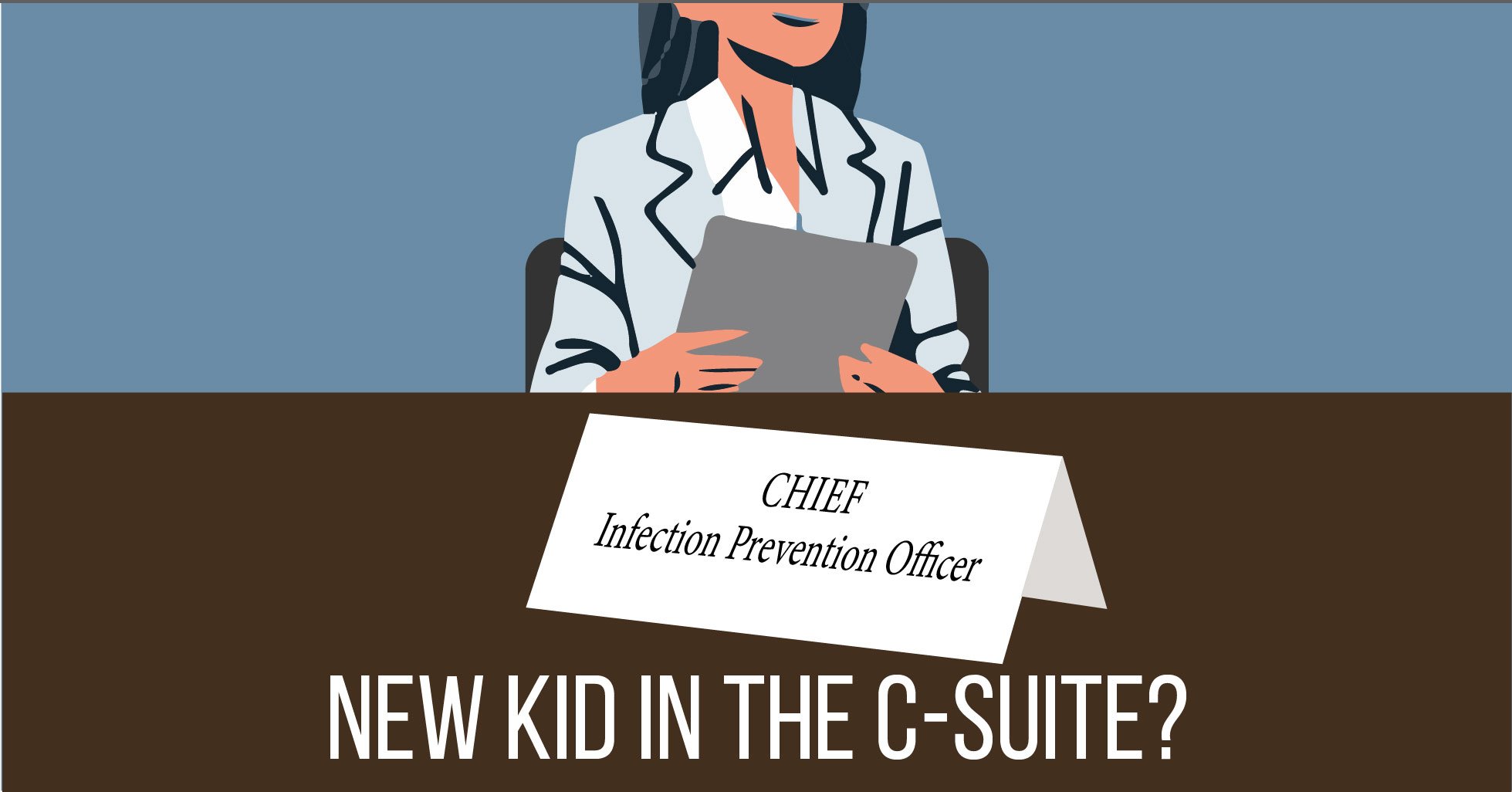The Chief Infection Prevention Officer: New Kid in the C-Suite?

 A recent article in Infection Control Today considered a C-suite position for infection prevention, its adoption nationwide, and its potential to improve patient outcomes long-term. In today's post, we'll provide a brief overview of what this new position means to those systems who have adopted it, but also examine how a C-suite position could transform the efficacy of infection prevention and control the way no other position has been able to accomplish through two critical functions: Access and authority.
A recent article in Infection Control Today considered a C-suite position for infection prevention, its adoption nationwide, and its potential to improve patient outcomes long-term. In today's post, we'll provide a brief overview of what this new position means to those systems who have adopted it, but also examine how a C-suite position could transform the efficacy of infection prevention and control the way no other position has been able to accomplish through two critical functions: Access and authority.
![]() As the highest-ranking positions in a hospital or healthcare system, the C-suite (C for Chief), set strategies and make decisions directly, reporting only to the Board of Directors. Senior positions, including Vice Presidents, Executives, and Directors, report to the C-suite. The Chief Infection Prevention Officer (CIPO), therefore, is a system- or facility-wide decision-maker. Currently, there are very few hospitals or systems with this position, but we can look to them to get an idea of what this position would entail.
As the highest-ranking positions in a hospital or healthcare system, the C-suite (C for Chief), set strategies and make decisions directly, reporting only to the Board of Directors. Senior positions, including Vice Presidents, Executives, and Directors, report to the C-suite. The Chief Infection Prevention Officer (CIPO), therefore, is a system- or facility-wide decision-maker. Currently, there are very few hospitals or systems with this position, but we can look to them to get an idea of what this position would entail.
Responsibilities: As a chief officer, the CIPO is responsible for all aspects of infection control and prevention across all departments. The CIPO oversees the creation of the IP program and goals, orchestrates implementation and collaboration, supervises implementation, and ensures that accurate data is presented to the Board of Directors and stakeholders, including the community.
Background: The CIPO ideally brings practical and administrative experience to help navigate both the management and clinical aspects of IP. This position benefits from a background in hospital epidemiology, clinical research, and public health, but will also need to become familiar with areas that intersect with infection control such as air handling, product evaluation, environmental services, human resources, and adult education/certification. To succeed, the CIPO will need to be a skilled communicator, ready and willing to engage with individuals and departments across the entire spectrum of hospital operations, and have a particular ability to transform data into action.
Relevance: With the growth of healthcare networks and their numerous affiliated service providers, the need for an executive dedicated solely to infection prevention and control would seem to be paramount. In most facilities today, an infection preventionist has only limited decision-making power, typically reporting to a senior administrator who then reports to a C-suite executive. In addition to this limit, the IP will often not have access to every department that intersects with IP, or the time to dedicate to fostering this level of collaboration. As CIPO, in contrast, would have a dedicated staff in IP, but also have the authority and the access to engage everyone necessary to make sustainable changes and improvements. The establishment of a Chief Infection Prevention Officer, and its associated access and authority, indicates a true commitment to reducing hospital-associated infections.
Do you think more and more hospitals and healthcare systems will create a C-suite position for an IP professional? What impact would a CIPO have on your facility? Share your thoughts in the comments below!
![EOScu Logo - Dark - Outlined [07182023]-01](https://blog.eoscu.com/hubfs/Eoscu_June2024/Images/EOScu%20Logo%20-%20Dark%20-%20Outlined%20%5B07182023%5D-01.svg)




